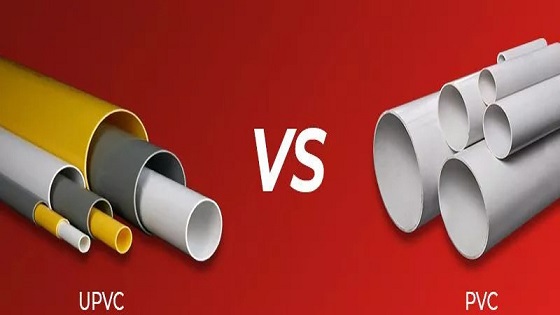PVC pipes have been used for a long time and are eco-friendly, cost-effective, and highly suited for numerous purposes. They are made of vinyl chloride monomers and offer a variety of benefits, making them suitable for use by both government and private sectors. The article discusses the basic type of PVC, which is UPVC.

PVC pipes and their variants have become a replacement for steel pipes and a great alternative in construction, from being used in plumbing, sewage, and transportation. PVC is also known as RPVC owing to its flexibility imparted by plasticising. The latter includes the addition of phthalates that makes it multipurpose.
The UPVC do not have plasticiser coated pipes, which makes them rigid. They are also low-maintenance and cost-effective, with wide usage in plumbing, handling extreme temperature and salt concentration waters, and production lines in industries and construction.
Difference between PVC and UPVC pipe
The difference lies in the aspects discussed below:
- Manufacturing: PVC pipes have plasticisers added for flexibility; however, UPVC lacks them, thus being more rigid.
- Uses: PVC pipes are more frequently used in pool water systems, irrigation, and plumbing due to flexibility which enables different designs, cuts, and lengths on the pipes. Apart from plumbing, UPVC is highly used in transportation, industrial construction, and places requiring high chemical and corrosion resistance.
- Pipe fittings: PVC pipe fittings are comparatively more complex to install than the UPVC pipeline systems.
- Durability: UPVC’s are observed to be more durable compared to PVC pipes.
Benefits of UPVC Pipeline System:
The wide spectrum of benefits of these pipes are as follows:
- Non-toxic: UPVC is highly stable in contact with different chemicals, salts, and acidic and alkali content of water and temperature ranges. The non-reactivity and inertness make it suitable for drinking water. The absence of lead, other heavy metals, or plasticisers in these pipes makes them suitable for use and consumption without any possibility of leakage of manufacturing materials. Additionally, manufacturers make the pipes antimicrobial, thus resisting the growth of fungi, bacteria and other pathogenic microorganisms.
- Smooth flow: The smooth inner walls enable the lowest possible friction to water movement and prohibit water stagnancy in grooves. It is beneficial for fast water flow.
Easy installation: These pipes are low in weight and easy to install. It also helps in low cost of transportation. - Leak resistance: Minimum number of joints in the connection system is key to preventing leakage. The availability of pipes in different lengths minimises the risk of leakage. Additionally, being made of plastic, they do not require welding but rather cementing for the joint fittings that can be tightly sealed with cement.
- Strength and durability: Plumbing requires the use of an efficient pipeline system. Thus, long life, resistance to environmental factors, durability, and strength are key characteristics looked for in the pipes. The pipes are equipped with high tensile strength and the inability to break under pressure. They are also resistant to UV, rusting, and corrosion. They can also handle earthquakes.
Disadvantages of UPVC pipe
- Unsuitable for constant hot temperature places
- Sensitive to mechanical shock and low bearing capacity
- High expansion coefficient
- High drainage noise
Applications of UPVC
- For internal and external piping systems of the house and hand pumps
- Transportation of chemicals in industries
- Irrigation systems
- Manufacturing electrical conduits
- For proper ventilation to get rid of corrosive gases
- Crude oil pipeline due to least corrosiveness
- Sewer and drainage system
- Suitable for hot water systems
- Alternative to wood as doors and windows due to environmental and sound resistance
Conclusion
PVC water pipes and UPVC pipes are commonly used materials used in different domains. Their numerous properties make them suitable for construction, the electrical industry, transportation, and other mentioned areas. The best part is their inert and non-toxic nature, making them suitable for drinking water. Along with eco-friendliness and recyclability, they are cost-effective and thus easily usable by anyone.














